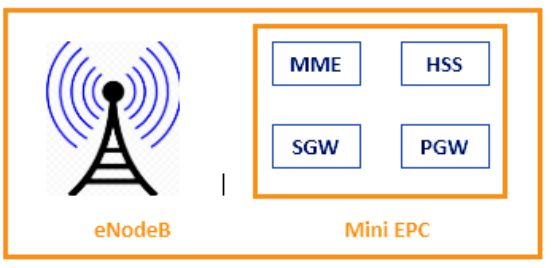In LTE (Long-Term Evolution) networks, an eNodeB (evolved Node B) is a key component that serves as the base station. It has several functions within the LTE architecture:
-
Radio Transmission: The eNodeB is responsible for transmitting and receiving radio signals to and from the User Equipment (UE), also known as mobile devices. It handles the physical layer processing, modulation, coding, and decoding of data for wireless transmission.
-
Radio Resource Management: The eNodeB manages the allocation and control of radio resources, such as frequency bands, time slots, and power levels, to ensure efficient utilization of the available spectrum.
-
Mobility and Handover Management: When a UE moves from one eNodeB coverage area to another, the eNodeB facilitates the handover process. It coordinates with neighboring eNodeBs to ensure a seamless transition of the ongoing communication session from one cell to another, minimizing service disruptions.
-
Connection Establishment: The eNodeB handles the initial establishment of connections between UEs and the LTE network. It performs procedures like random access, authentication, and security setup to establish a secure communication link between the UE and the LTE core network.
-
Mobility Management: The eNodeB tracks the mobility of UEs within its coverage area. It manages parameters related to handovers, cell reselection, and paging, ensuring that UEs are efficiently handed off between cells and receive incoming calls or messages when in idle mode.
-
Quality of Service (QoS) Enforcement: The eNodeB monitors and enforces QoS policies for UEs. It assigns appropriate radio resources, prioritizes different types of traffic (e.g., voice, video, data), and manages congestion to ensure that UEs receive the expected level of service.
-
IP Packet Routing: The eNodeB acts as a gateway between the LTE radio access network and the LTE core network. It performs IP packet routing functions, forwarding user data between UEs and the core network entities, such as the Serving Gateway (SGW) and the Packet Data Network Gateway (PGW).
-
Synchronization: It ensures that the eNodeBs in a network are synchronized in terms of timing and frequency to avoid interference and maintain proper coordination.
-
Network Management: The eNodeB provides network management functions, including monitoring and control of network elements, performance optimization, fault detection, and troubleshooting.
Overall, the eNodeB plays a crucial role in the LTE network by managing radio resources, establishing and maintaining connections, ensuring mobility and security, providing efficient data transmission for UEs and optimizing network performance.

LinkedIn: ![]()